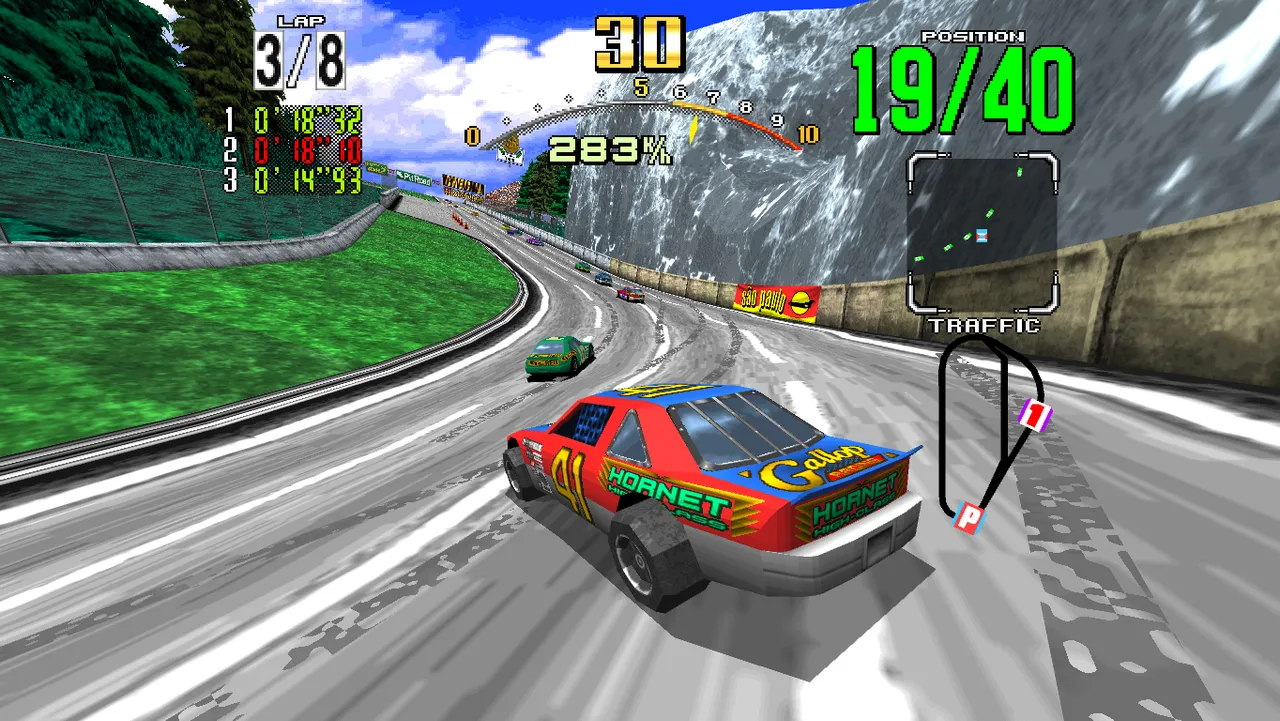
In the decade of the 80s and 90s, SEGA was WAY bigger in everything in many ways related to videogames, most notably with the SEGA Genesis going head to head with the Super Nintendo internationally in sales, but also with their arcade division, where they would only have Namco as their biggest rival. It would be in 1993 that both Namco and SEGA's latest diamonds showcasing 3D graphics in high-speed races: Ridge Racer and Daytona USA, competing head to head for supremacy in the arcades along with fighting games, light-gun games and beat-em-ups.
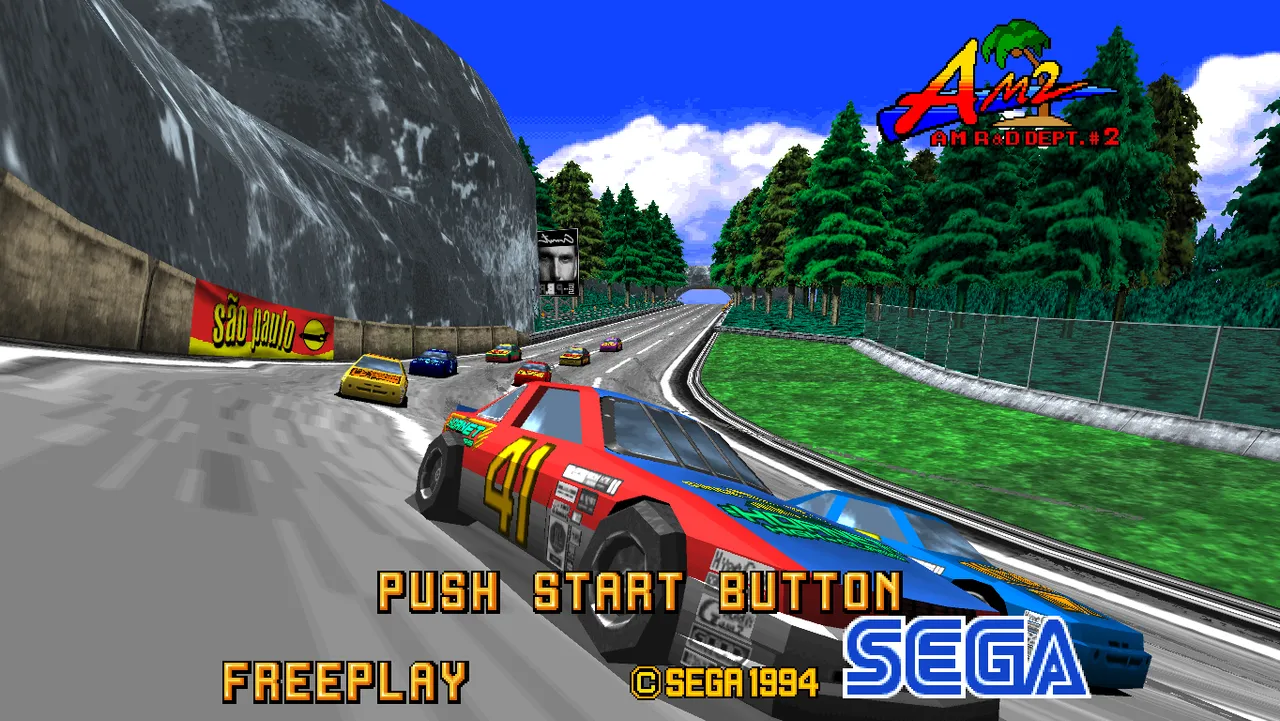
While Namco ended up winning the war as their PS1 port of Ridge Racer really made the Saturn version of Daytona USA pale in performance (and Ridge Racer would get several sequels on consoles), Daytona USA had an incredible presence in arcades, as the striking presentation and challenging gameplay made a bigger impact in what game would you see more at your local arcade. I even saw and played in a Daytona USA twin cabinet in another state! And that's not even talking about the fact that I found this game because of how there was a Daytona USA 2 cabinet on my local arcade since I was a kid (trust me, I'll talk about that one day).
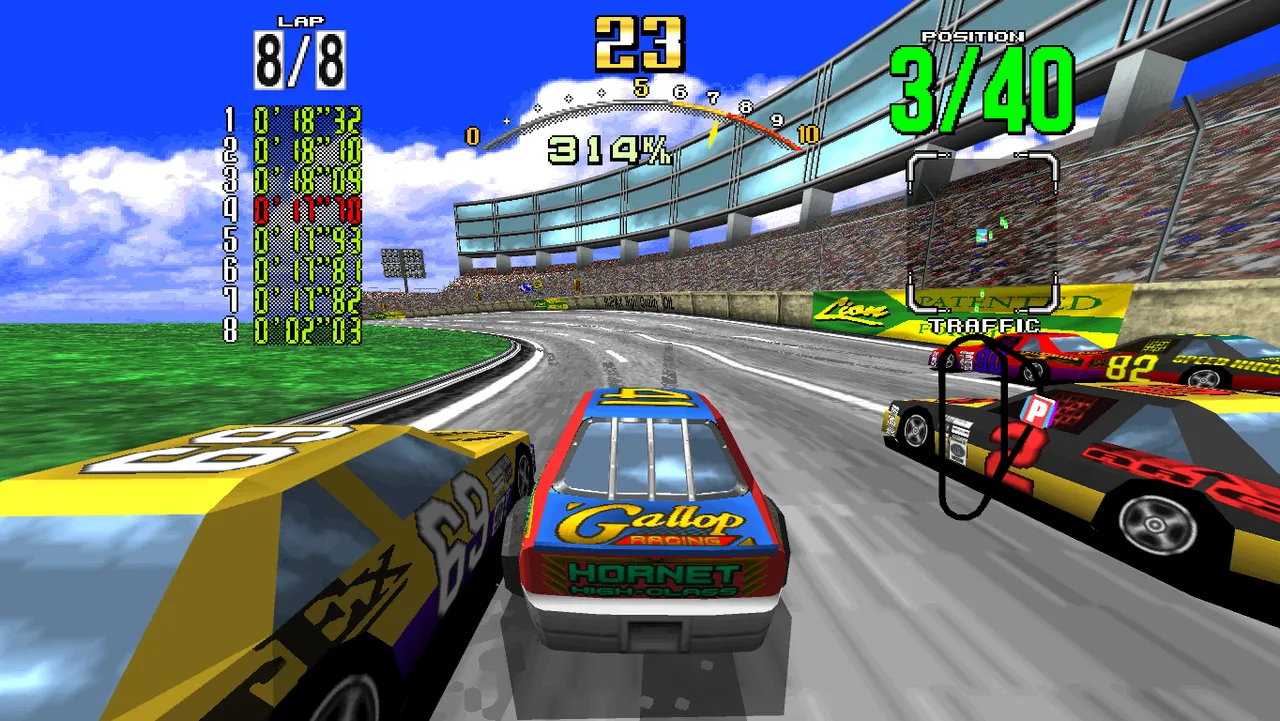
Around this time, SEGA was pushing further and further the power of their hardware with each board they produced, and for a TIME where the first generation of consoles that pushed 3D graphics on the home market hadn't arrived yet, Daytona USA was an absolutely stunning game running on the Model 2 board, with detailed polygons for tracks and your own car (which can actually show damage if you crash with walls), along with bright colors and textures running in a smooth 60fps framerate that not only were incredible for that time, but also still hold up really well today; specially when upscaled and with widescreen through emulation or in the modern re-releases (which actually removed pop-in from draw distance).

Everything about the sound design and music is also one huge factor about Daytona's uniqueness; Takenobu Mitsuyoshi not only had already made some awesome music for previous SEGA games, but also went one step above and actually sang for the game's music tracks. This would make the Daytona USA music incredibly unique and catchy (specially for a racing game), solidifying him with a legendary status for both his energetic compositions and his stellar singing voice.
There was an extra song that could be enabled with the view buttons before a race on top of the normal one for each race, and entering certain initials in the Name Entry screen would give you a jingle referencing another SEGA game.

However, paired with the very memorable presentation, is a very rewarding racing game: It is absolutely not anything like a sim racer...but it isn't like Burnout or Ridge Racer where drifts are easy to start and control, as this game allows for some amazing drifts either with the classic brake-and-turn or with Manual transmission gear shifting...but once you start a drift, you'll have to know when to start accelerating again (or the gear change combo) or else you'll overdo it and spin out.
There are three tracks: The Beginner track with an oval that only requires consistency and doing the last turn drift right, the Advanced track where you'll need to drift properly for several turns, and the Expert track which...I still struggle with to this day, as there are many REALLY sharp turns that need to be figured out with practice or else.
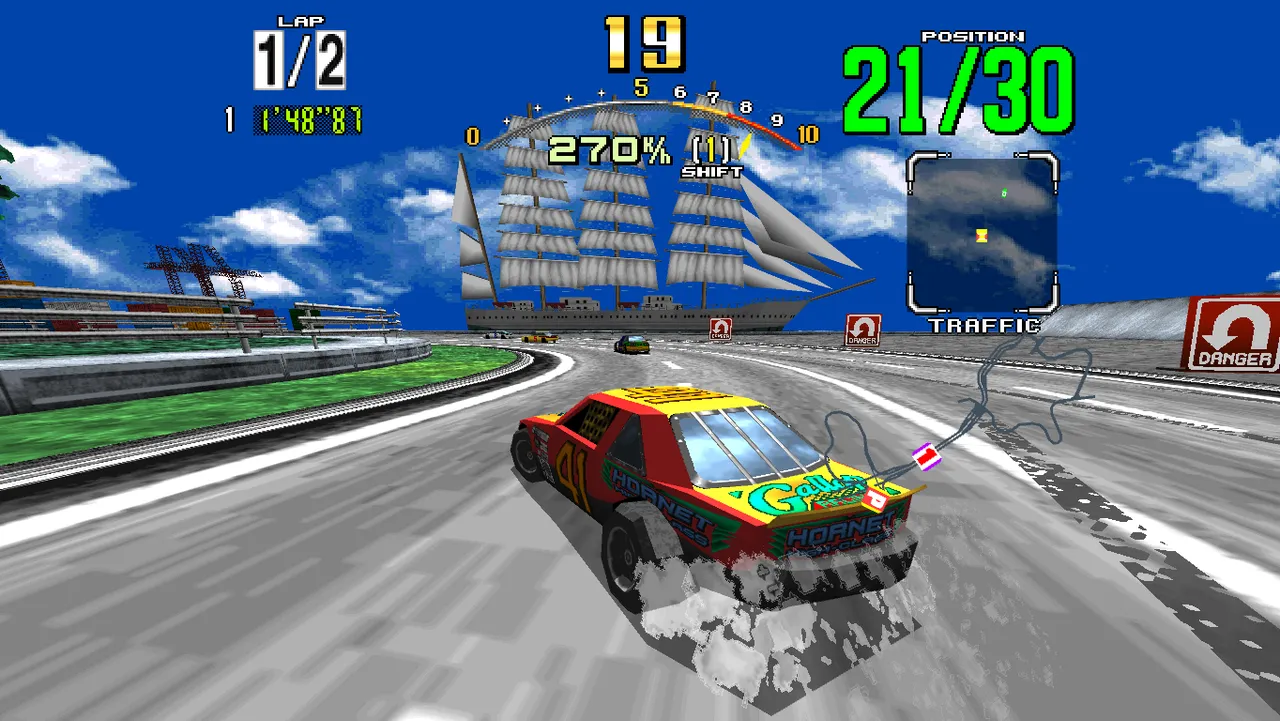
While I've only had few opportunities to play the X360 version with a friend's Xbox, the game not only still looks and plays as good as with emulation (if not better looking with no pop-in and redrawn HUD), but also includes some challenges and online support for up to 8 players, though unfortunately doesn't have splitscreen. I actually learned to use Manual Transmission properly for this game ever when I had to complete one trial that required you to use MT drifting, thanks to the shift buttons being mapped on the face buttons making that simple to understand, and from what I've seen from videos playing the game online, it works like a dream even today.

For those that have nailed driving in this game, it is an absolute joy to play, and even for anyone that hasn't played it, its hard to understate the impact of the iconic visuals and music this game boasted. One of my favorite games ever since I was a kid (and forever it will be), and thankfully it hasn't been forgotten by others, specially thanks to the Xbox Series X having back-compat for the 360 version and long-time fans. I'll definitely talk about the other unique ports and sequel that Daytona had one day, but for now, I'm definitely glad to have played this again 😄
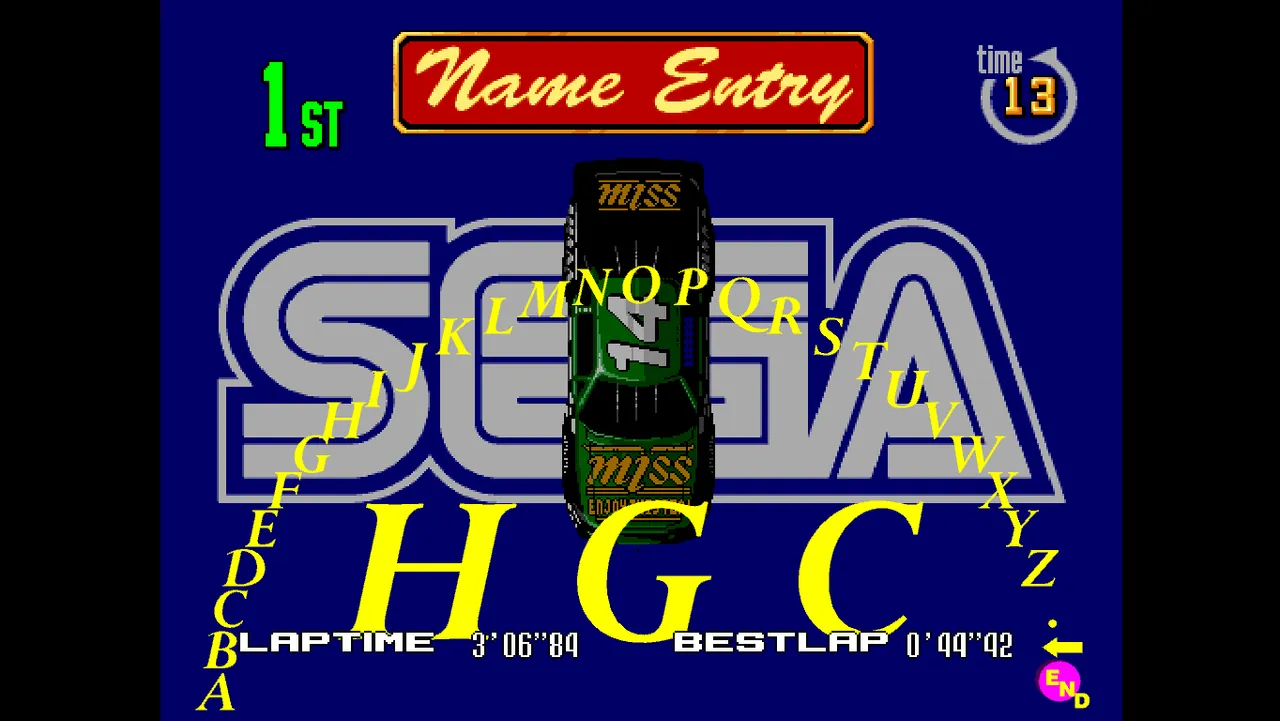
Thank you so much for reading! If you want me to review more awesome arcade racing games (or want more of that SEGA goodness, I know I do), let me know in the comments! You can also check some of my previous reviews here:
Battle City - Awesome tank blasting on the NES/Polystation!
Tank Force - Battle City's Bigger Successor
Cadillacs and Dinosaurs - Capcom's obscure bombastic beat-em-up
Final Fight - A genre-defining classic in the world of beat-em-ups
Bloody Roar - A beastly challenger in the fray of 3D fighters
Contra III - Evolution of run-and-gun, classic blasting fun!
Sunset Riders - Running and gunning down the Wild West
Spanish translation with DeepL. All screenshots were captured by myself.
Español
En la década de los 80 y los 90, SEGA era MUY grande en todo lo relacionado con los videojuegos, sobre todo con la SEGA Genesis que se enfrentaba a la Super Nintendo a nivel internacional en ventas, pero también con su división arcade, donde sólo tendría a Namco como mayor rival. Sería en 1993 cuando los últimos diamantes de Namco y SEGA mostraran gráficos en 3D en carreras de alta velocidad: Ridge Racer y Daytona USA, compitiendo cara a cara por la supremacía en los salones recreativos junto con los juegos de lucha, los juegos de armas ligeras y los beat-em-ups.

Aunque Namco acabó ganando la guerra, ya que su port de PS1 de Ridge Racer hizo palidecer a la versión de Saturn de Daytona USA en cuanto a rendimiento (y Ridge Racer recibiría varias secuelas en consolas), Daytona USA tuvo una presencia increíble en los salones recreativos, ya que la llamativa presentación y la desafiante jugabilidad tuvieron un mayor impacto en qué juego verías más en tu salón recreativo local. ¡Incluso vi y jugué en un gabinete gemelo de Daytona USA en otro estado! Y eso sin hablar del hecho de que encontré este juego gracias a que había un gabinete de Daytona USA 2 en mi arcade local desde que era un niño (confía en mí, hablaré de eso un día).

En esta época, SEGA estaba ampliando cada vez más la potencia de su hardware con cada placa que producía, y para una ÉPOCA en la que la primera generación de consolas que impulsaba los gráficos 3D en el mercado doméstico aún no había llegado, Daytona USA era un juego absolutamente impresionante que corría en la placa Model 2, con polígonos detallados para las pistas y tu propio coche (que de hecho podía mostrar daños si chocabas con las paredes), junto con colores brillantes y texturas que corrían a una suave velocidad de fotogramas de 60 fps que no sólo eran increíbles para esa época, sino que también se mantienen realmente bien hoy en día; especialmente cuando se amplía y se utiliza la pantalla panorámica a través de la emulación o en las reediciones modernas (que han eliminado el pop-in de la distancia de dibujado).

Todo lo relacionado con el diseño de sonido y la música es también un gran factor de la singularidad de Daytona; Takenobu Mitsuyoshi no solo había hecho una música impresionante para los anteriores juegos de SEGA, sino que además fue un paso más allá y cantó para las pistas musicales del juego. Esto hizo que la música de Daytona USA fuera increíblemente única y pegadiza (especialmente para un juego de carreras), consolidando su estatus de leyenda tanto por sus enérgicas composiciones como por su estelar voz.
Había una canción extra que podía activarse con los botones de vista antes de una carrera, además de la normal para cada carrera, y al introducir ciertas iniciales en la pantalla de entrada de nombres aparecía un jingle que hacía referencia a otro juego de SEGA.

Sin embargo, junto con la presentación muy memorable, es un juego de carreras muy gratificante: No es en absoluto nada parecido a un simulador de carreras... pero no es como Burnout o Ridge Racer, donde los derrapes son fáciles de iniciar y controlar, ya que este juego permite unos derrapes increíbles, ya sea con el clásico frenar y girar o con el cambio de marchas de la transmisión manual... pero una vez que empiezas un derrape, tendrás que saber cuándo empezar a acelerar de nuevo (o el combo de cambio de marchas) o de lo contrario te pasarás y harás un trompo.
Hay tres pistas: La pista para principiantes con un óvalo que sólo requiere consistencia y hacer bien el drift de la última curva, la pista avanzada en la que tendrás que derrapar correctamente durante varias curvas, y la pista experta con la que... sigo luchando hasta el día de hoy, ya que hay muchas curvas REALMENTE cerradas que hay que descifrar con la práctica o de lo contrario.

Aunque sólo he tenido unas pocas oportunidades de jugar a la versión de X360 con la Xbox de un amigo, el juego no sólo sigue viéndose y jugándose tan bien como con la emulación (si no con mejor aspecto al no haber pop-in ni HUD redibujado), sino que también incluye algunos retos y soporte online para hasta 8 jugadores, aunque desgraciadamente no tiene pantalla dividida. De hecho, aprendí a usar la transmisión manual correctamente en este juego cuando tuve que completar una prueba que requería usar la transmisión manual para derrapar, gracias a que los botones de mayúsculas están mapeados en los botones de la cara, lo que hace que sea fácil de entender, y por lo que he visto en los vídeos del juego online, funciona como un sueño incluso hoy en día.
emulator_multicpu 2021-12-04 16-44-43-79.png]( )
)
Para aquellos que han conseguido conducir este juego, es un placer absoluto jugarlo, e incluso para cualquiera que no lo haya jugado, es difícil subestimar el impacto de los icónicos efectos visuales y la música que este juego ostentaba. Es uno de mis juegos favoritos desde que era un niño (y siempre lo será), y afortunadamente no ha sido olvidado por los demás, especialmente gracias a que la Xbox Series X tiene retrocompatibilidad con la versión de 360 y a los antiguos fans. Definitivamente, algún día hablaré de los otros ports únicos y de la secuela que tuvo Daytona, pero por ahora, definitivamente estoy contento de haber jugado esto de nuevo 😄.

¡Muchas gracias por leer! Si quieres que revise más juegos de carreras arcade (o quieres más de esa bondad de SEGA, sé que yo lo quiero), ¡déjame saber en los comentarios! También puedes consultar algunas de mis reseñas anteriores aquí:
Battle City - Awesome tank blasting on the NES/Polystation!
Tank Force - Battle City's Bigger Successor
Cadillacs and Dinosaurs - Capcom's obscure bombastic beat-em-up
Final Fight - A genre-defining classic in the world of beat-em-ups
Bloody Roar - A beastly challenger in the fray of 3D fighters
Contra III - Evolution of run-and-gun, classic blasting fun!
Sunset Riders - Running and gunning down the Wild West
Traducción al español hecha con DeepL. Todas las fotos capturadas por mí.